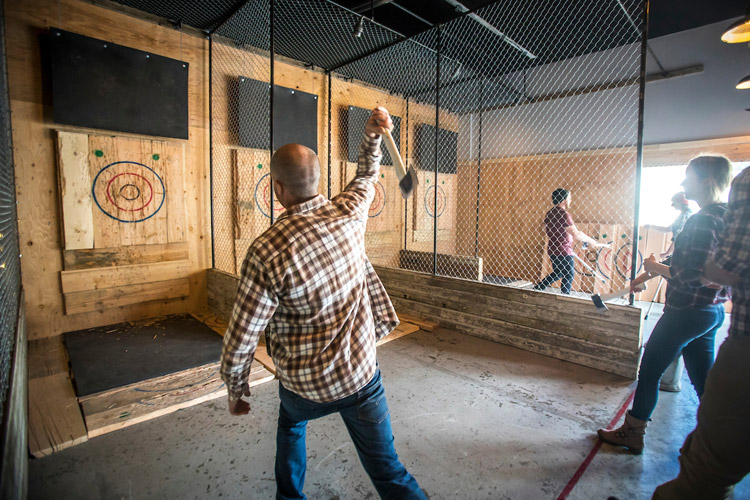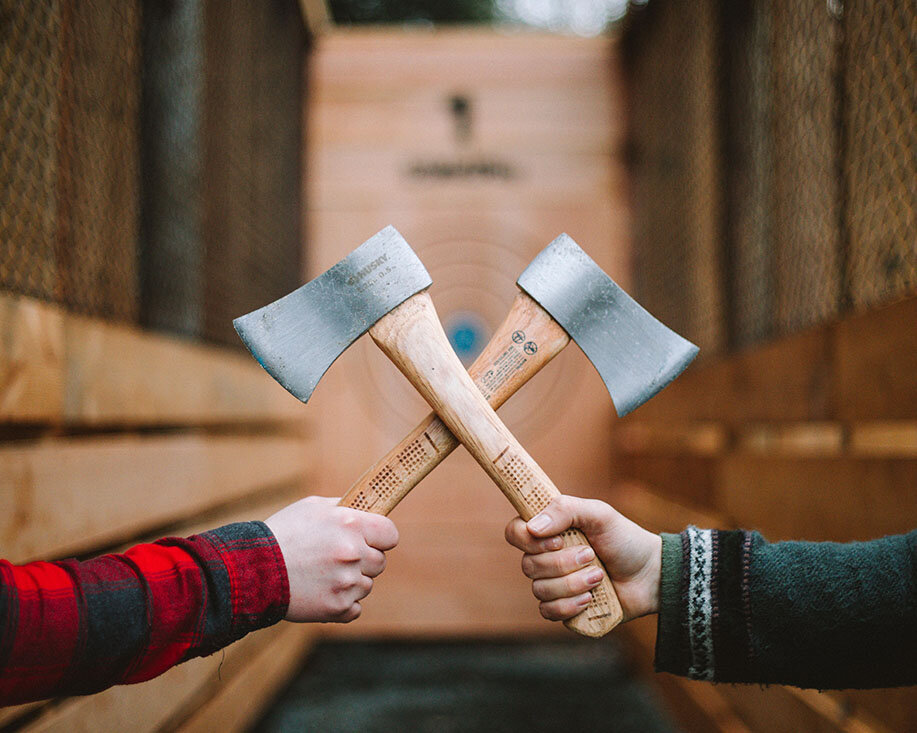The Fun of Axe Throwing: Exactly How This Sporting Activity Combines Skill and Adrenaline for a Blast
Axe throwing has arised as a mesmerizing sporting activity that masterfully links the need for exact skill with the rush of adrenaline, offering individuals a one-of-a-kind and interesting experience. The act of tossing an axe towards a target requires focus and strategy, all at once cultivating an atmosphere of friendship and friendly rivalry.
The Origins of Axe Throwing
Axe throwing, a leisure activity that has actually acquired considerable popularity in recent years, traces its roots back to ancient times. The earliest documents of axe use in competitive contexts are located amongst the Celts and Vikings, who tossed axes for sport as well as in fight training.
Medieval European warriors, particularly during the Center Ages, practiced axe throwing as part of their martial training. The Francisca, a kind of tossing axe used by the Franks, ended up being renowned for its dangerous precision. This typical weapon was developed to be thrown at opponent shields and shield, showcasing its twin utility in both sporting activity and battle.
In more current history, axe tossing saw a rebirth in the logging camps of The United States and copyright in the 19th and 20th centuries. Lumberjacks would certainly engage in pleasant competition, examining their precision and toughness by targeting at wooden targets. This development from a survival skill to a recreational task has led the way for its modern-day revival, with committed locations and organizations now celebrating the sporting activity worldwide.
Equipment You Need
Understanding the abundant history of axe throwing boosts the admiration of the sporting activity's modern-day model. Central to this thrilling task is the tools, which is vital for both safety and security and performance. The key device is, obviously, the axe. For entertainment and affordable axe tossing, the most typically made use of kind is the hatchet, commonly considering between 1.25 to 2 pounds with a handle size of around 16 inches. The axe should have a sharp, properly maintained blade and a handle made from sturdy wood or composite material, ensuring an excellent hold and equilibrium.
Just as crucial is the target. Policy targets are created from wood, with softwood selections like want or cottonwood being liked for their capability to hold the axe and take in. The target is typically divided right into five concentric circles, each with a certain factor worth, to assist in scoring.
Safety gear, though often ignored, is essential. Protective handwear covers can boost grasp and prevent blisters, while closed-toed shoes are a must to safeguard feet from dropped axes (ax throwing denver). Ultimately, a well-lit, roomy tossing location, total with safety obstacles, makes sure a regulated atmosphere where participants can concentrate on honing their abilities.
Standard Techniques Clarified
Grasping the basic methods of axe throwing is crucial for both safety and effectiveness. The very first strategy to comprehend is the hold. Hold the axe with a firm, yet unwinded hold, akin to holding a golf club. The dominant hand needs to be placed straight listed below the axe head, while the non-dominant hand sustains the end of the manage.
Your leading foot must be somewhat onward, aligning with your target. This positioning aids in maintaining security and routing power accurately towards the target.

Security First
Making sure security in axe throwing is vital to creating a satisfying and injury-free experience. A well-designed axe throwing center functions clear demarcations between tossing lanes, durable backgrounds to capture roaming axes, and non-slip floor covering to protect against mishaps.
Advantages of Axe Throwing
Axe tossing deals a myriad of advantages that prolong beyond basic recreation. Literally, it supplies a full-body workout, involving muscular tissues in the arms, shoulders, back, and core. The repeated motion of tossing the axe additionally boosts hand-eye sychronisation and great electric motor abilities. For those seeking to enhance their overall fitness, axe throwing can serve as a interesting and vibrant form of exercise.
Mentally, axe tossing requires strategy, accuracy, and emphasis, making it an exceptional way to sharpen cognitive abilities. The concentration needed to strike the target can work as a type of mindfulness, allowing individuals to remove their minds and lower tension. This psychological involvement can be specifically helpful in aiding people establish better analytic abilities and mental resilience.
Socially, axe throwing is usually appreciated in team settings, cultivating team-building and friendship. Whether as part of a company event or a laid-back trip with close friends, the sport motivates communication and cooperation. view it Additionally, the common experience of discovering and boosting together can enhance connections and develop enduring memories.
Conclusion

The earliest documents of axe use in competitive contexts are discovered among the Celts and Vikings, who threw axes for sporting activity as well as in combat training. Launch the axe when your hands are approximately check my blog at eye level, permitting the axe's natural turning to guide it in the direction of the target.
A well-designed axe tossing facility attributes clear demarcations between tossing lanes, tough backdrops to capture stray axes, and non-slip flooring to stop mishaps. Individuals must be advised on the proper means to take care of and throw the axe, stressing controlled, intentional activities over strong tosses.
In recap, axe throwing stands out as a sport that masterfully integrates ability, accuracy, and adrenaline.